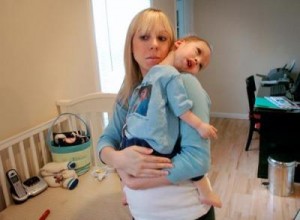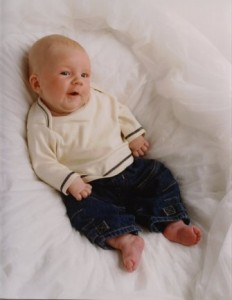What is Spinal Muscular Atrophy?
Page Contents
- 1 What is Spinal Muscular Atrophy?
- 2 Spinal Muscular Atrophy Incidence
- 3 Spinal Muscular Atrophy Types
- 4 Spinal Muscular Atrophy Causes
- 5 Spinal Muscular Atrophy Genetics
- 6 Spinal Muscular Atrophy Inheritance
- 7 Spinal Muscular Atrophy Symptoms
- 8 Spinal Muscular Atrophy Diagnosis
- 9 Spinal Muscular Atrophy Differential Diagnosis
- 10 Spinal Muscular Atrophy Treatment
- 11 Spinal Muscular Atrophy Prognosis
- 12 Spinal Muscular Atrophy Complications
- 13 Spinal Muscular Atrophy Life Expectancy
- 14 Spinal Muscular Atrophy Prevention
- 15 Spinal Muscular Atrophy Support Groups
- 16 Spinal Muscular Atrophy Pictures
Spinal Muscular Atrophy (SMA) is a life threatening genetic disorder that is characterized by weakness and muscle damage. In this condition, some nerves in the spinal cord and brain suffer death – thereby impairing a patient’s ability to move. The symptoms of the condition aggravates over time, leading to the death of its sufferer.
SMA can also be referred to by any of the following names:
- Hereditary Motor Neuronopathy
- Progressive Muscular Atrophy
- Spinal Amyotrophy
Spinal Muscular Atrophy Incidence
SMA is a fairly rare disorder affecting 1 in every 6,000 to 10,000 people. It can occur in people from all countries and ethnic groups, although it is most frequently noted in Caucasians.
Spinal Muscular Atrophy Types
SMA has been divided into five types, depending on the age of onset of the symptoms. The classification is done in the following manner:
Type 0 SMA
It is one of the most severe forms of the disorder. The symptoms start occurring during the later stages of pregnancy when the fetus becomes less active than normal. After birth, the newborn is unable to move freely and may experience difficulty in breathing and/or swallowing without medical assistance. Babies born with this type of SMA generally die within six months of age.
Type I SMA (Infantile)
It is also known as Werdnig–Hoffmann Disease and affects infants aged below six months. The motor neurons die rapidly, making it difficult or impossible for a patient to move. The major organs of the body are also unable to work properly due to the condition. Patients usually die at a very young age. However, some patients survive till adolescence and adulthood with proper respiratory support.
Type II SMA (Intermediate)
Also known as Dubowitz Disease, it occurs in babies aged between 6 months and 18 months. Children affected by this intermediate form are unable to stand and walk all their lives. The symptoms aggravate very rapidly without proper treatment.
Type III SMA (Juvenile)
Also referred to as Kugelberg–Welander Disease, it occurs in children over 18 months of age. Patients are initially able to walk on their own but lose this ability with the progression of the disorder.
Type IV SMA (Adult-onset)
It is occasionally classified as late-onset type III SMA as it occurs in adults. Individuals start developing the symptoms at around thirty years of age. Patients lose their ability to move and walk freely, although they generally have a normal life expectancy.
Spinal Muscular Atrophy Causes
SMN1 genetic mutations are the principal causes responsible for this condition. Mutations in the UBA1, IGHMBP2 and VAPB genes are other possible causes. An individual inherits the defective gene from carrier parents. A family history of the disorder is an important risk factor. The different forms of Progressive Muscular Atrophy may result from various genetic mutations.
Spinal Muscular Atrophy Genetics
The SMN1 and the SMN2 genes are responsible for providing instructions for the production of the SMN (Survival Motor Neuron) protein, which is essential for maintaining the neurons. The motor neurons control the movement of the muscles and are located in one’s brainstem and spinal cord. Several forms of SMN protein are created with the most functional form produced mainly by the SMN1 gene.
SMN1 gene mutations disrupt the production of this SMN protein, leading to the death of the motor neurons. This hampers the transportation of nerve impulses between brain and various muscles. Due to this reason, many muscles become unable to function properly which results in impaired movement and weakness.
Spinal Muscular Atrophy Inheritance
It follows the autosomal recessive dominance pattern, which means 2 copies of the mutated gene has to be inherited by an individual to develop the symptoms of SMA. Parents of SMA sufferers often only carry the abnormality and do not develop the condition themselves. If both parents are carriers of the defective gene, they have 25% chance of having a child with the condition. There is 50% chance that the child will only carry the mutation without developing the disorder. Approximately 1 out of every 40 individuals carries the abnormal gene responsible for SMA.
The X-linked infantile SMA is inherited in the X-linked pattern.
Spinal Muscular Atrophy Symptoms
The symptoms may vary greatly depending on the type of the disease and age of onset. SMA has been suggested to be associated with certain heart disorders. Following are its common signs:
- Overall muscle weakness
- Poor muscle tone in affected babies who often tend to flop (Floppy Baby Syndrome)
- Areflexia, especially in the extremities
- Difficulty in sitting, standing or walking (depending on the severity of SMA)
- Delay in reaching developmental milestones
- Affected infants often adopt a frog-leg sitting position with hips abducted and the knees flexed
- Pulmonary muscle weakness resulting in respiratory distress, weak coughs, weak cry and buildup of various secretions in lungs or throat
- The head often remains tilted to one side, even in the lying position
- Bell-shaped torso
- Clenched fists along with sweaty hands
- Lower than normal body weight
- Twitching or fasciculations of the tongue
- Poor feeding due to difficulty in swallowing and sucking
- Arthrogryposis or multiple congenital contractures
- Impairment of the β-oxidation of the fatty acids in the muscles due to the metabolic abnormalities caused by the disorder, leading to acidemia and muscle damage
The intelligence and behavior of children affected by SMA are not different form healthy children. Sometimes, the cognitive development is slightly faster in patients and their intelligence can be above the average level.
Spinal Muscular Atrophy Diagnosis
The type 0 SMA is generally evident before the birth of an affected infant. Reduced fetal movement during the later months of pregnancy is one of the most important signs of the condition. The physical symptoms present in newborn babies with SMA also help to make the diagnosis. The diagnostic tests used for making the diagnosis include:
- Aldolase
- Muscle biopsy
- Spinal MRI
- Electromyography (EMG)
- ESR or Erythrocyte Sedimentation Rate
- CPK levels
- Blood test
- TSH test for measuring the thyroid-stimulating hormone levels
- Nerve conduction
- Ultrasound
- Serum amino acid test
- DNA testing for confirming diagnosis
Spinal Muscular Atrophy Differential Diagnosis
While assessing the presence of SMA it is important to eliminate, to avoid misdiagnosis, the possibility of presence of the following disorders:
- Congenital Muscular Dystrophy
- Amyotrophic Lateral Sclerosis
- Disorders of Carbohydrate Metabolism
- Myasthenia Gravis
- Primary Lateral Sclerosis
- Congenital Myopathies
Spinal Muscular Atrophy Treatment
No specific treatment procedure is available to cure this genetic disease. The treatment mainly focuses on managing the symptoms. There are no medications that can help to relieve the symptoms successfully. The most common and severe symptoms are treated in the following way:
Palliative Treatment
This includes:
Respiratory Care
Mild breathing difficulty can be relieved by regular breathing exercises. Patients suffering from more severe breathing problems are generally treated with Non-invasive ventilation. Tracheostomy may be necessary in extremely severe cases.
Increasing Mobility
Modern assistive equipments, such as motorized wheelchairs and walking frames, allow patients to move more freely.
Nutritional Care
The feeding difficulties associated with the disease can lead to various health problems related to malnutrition. A feeding tube may be required for children suffering from Type I and Type II SMA. Individuals with severe forms of the condition should reduce their fat intake and avoid fasting.
Cardiology
The doctor should take proper care of any associated heart condition present in the patient.
Physical Therapy and Exercise
Physiotherapy can help to manage the symptoms regarding bones, muscles, heart, lungs and the circulation. It is often used for improving the postures and range of motion of the patients. Physical therapy can also help to decelerate the progress of scoliosis.
Exercise
Regular exercise is also important for SMA patients in order to maintain proper circulation, improve range of movement and flexibility as well as to prevent joint stiffness. It also helps to delay muscle wastage by maintaining muscle strength.
Occupational Therapy
It helps patients to take part in as many social activities as possible despite their physical disabilities and deformities. It helps to improve the quality of life of individuals with SMA.
Surgical Treatment
The weak spine muscles may result in various orthopedic problems such as kyphosis and scoliosis. The pressure on the lungs due to the deformed spine can be relieved by a surgical procedure named spinal fusion, which is performed before the patient reaches 8 to 10 years of age. In this surgery, the back bones of a patient are fused together in the accurate position. It is the only permanent solution for the spinal problems resulting from this condition.
Research is being carried out to find out the usefulness of modern treatment options like gene therapy and stem cell therapy in treating Hereditary Motor Neuronopathy.
Spinal Muscular Atrophy Prognosis
The prognosis of SMA generally varies according to the type of the disease that an individual is suffering from. The condition is associated with a high mortality rate in children. With proper and timely treatment, however, children suffering from milder cases of Spinal Amyotrophy may survive to reach adulthood. People suffering from Type IV SMA usually have a better prognosis.
Spinal Muscular Atrophy Complications
In severe cases, SMA can lead to the following complications:
- Fluids and food may enter the lungs, leading to pneumonia
- Muscle and tendon contractions
- Scoliosis
- Heart failure
Spinal Muscular Atrophy Life Expectancy
In extremely severe cases, the life expectancy ranges from six months to five years. Moderate cases of the disease have a life expectancy of 20 years to 30 years. Patients suffering from types II and III SMA generally have normal life expectancy.
Spinal Muscular Atrophy Prevention
Genetic counseling is recommended for couples having a family history of SMA. Parents who already have a child with this disorder can consider prenatal screening between the 10th and 12th week of pregnancy. The prenatal testing allows the parents to see if the unborn child is affected by Hereditary Motor Neuronopathy. Genetic testing and gene review can help the parents to find out if they are carrying the defective gene as carriers generally do not have the symptoms.
Spinal Muscular Atrophy Support Groups
A number or forums and organizations are providing facts and spreading awareness regarding Progressive Muscular Atrophy to help people know more about this condition. Some of these are mentioned below:
Spinal Muscular Atrophy Foundation
888 Seventh Avenue
Suite 400
New York, New York State 10019
Fax: 212-247-3079
Telephone: 877-FUND-SMA (877-386-3762) 646-253-7100
Email: [email protected]
Website: http://www.smafoundation.org
Fight SMA
1680 Duke Street
Fourth Floor
Alexandria, Virginia 22134
Tel: 703-647-5032
Email: [email protected]
Website: http://www.fightsma.org
Spinal Muscular Atrophy Pictures
Here are a few images that show how SMA affects the spine and other body parts.
Picture 1 – Spinal Muscular Atrophy
Picture 2 – Spinal Muscular Atrophy Image
Spinal Muscular Atrophy is an incurable and serious hereditary disease that can occur during infancy, childhood or adulthood. SMA patients eventually face partial or complete physical disability. However, proper treatment allows the patient to retain some of the locomotive abilities and lead a relatively normal life.
References:
http://health.nytimes.com/health/guides/disease/spinal-muscular-atrophy/overview.html
http://www.nhs.uk/Conditions/Spinal-muscular-atrophy/Pages/Treatment.aspx
https://www.counsyl.com/diseases/spinal-muscular-atrophy/
http://ghr.nlm.nih.gov/condition/spinal-muscular-atrophy


